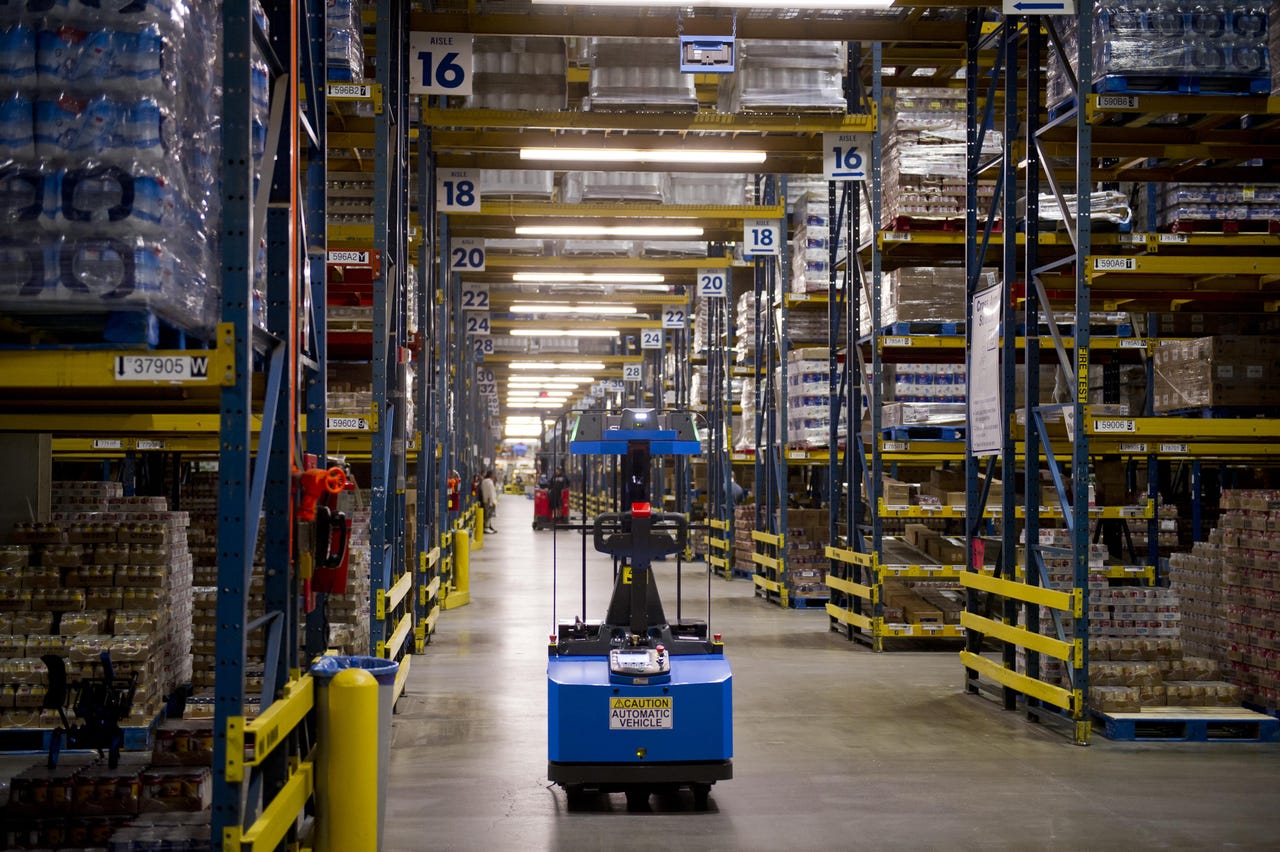Seegrid raises $25m to expand industrial AVs that navigate with low-resolution cameras


Photo: Seegrid
Seegrid, a robotics company that makes autonomous industrial vehicles, is expecting to double its revenue for the second year in a row. The Pittsburgh-based company just announced that it has raised $12 million of equity capital from Giant Eagle, its majority shareholder, and several other existing and new investors, and has a commitment for an additional $13 million from Giant Eagle.
Seegrid's VP of product and services Jeff Christensen tells ZDNet, "It shows a lot of confidence that our investors have in what we're doing and the technology and the company itself. We are getting a lot of market traction."
Industrial automation is a rapidly growing field with plenty of players, so I spoke with Christensen to find out why Seegrid has been so successful. He explains, "The secret is the statistics and the math that go into how we're processing that image. That's the secret sauce."
GPS doesn't work inside the confines of a warehouse, so other robotics companies use laser-based systems to navigate in industrial settings, but Seegrid uses cameras instead. Christensen says, "The density of data that we get through cameras is 100 times greater than what you get out of lasers, because we're talking about every pixel, as opposed to four beams of a laser."
Seegrid's cofounder, roboticist Dr. Hans Moravec, started building the foundation for vision guided vehicles more than 40 years ago. While he was a Ph.D. student at Stanford, he tethered a supercomputer to a vehicle in order to make it slowly drive itself across a room over the course of a few days.
A few decades and dozens of patents later, Seegrid's technology transforms standard industrial trucks into autonomous robots that transport materials for customers that include Whirlpool, Daimler, and Jaguar Land Rover.
So, what will Seegrid do with the latest round of funding? The team will likely expand, and the company will focus on R&D for improving the existing technology, potentially exploring new markets, and putting more resources into customer service efforts.
Christensen says, "All new technologies have adoption friction. A new way of doing things -- even if it's better -- requires a bit of hand holding. So we try to make sure people understand how the technology works."
As the truck drives, ten stereo cameras continuously take pictures that are used to create a dense 3D point cloud that enables the truck to navigate throughout a facility. Surprisingly, the system uses low-resolution black and white cameras, because higher resolution imagery just isn't necessary. Instead of fancy hardware, it's all about the data processing.
The vehicles carry heavy loads (up to 10,000 pounds) and they are designed to work alongside humans, so they are typically programmed to travel at speeds of roughly four or five miles per hour. Even at this slow pace, they are much more efficient than people.
"We are safer and more predictable than human drivers," says Christensen. "We don't take smoke breaks or quit our jobs, and we don't stop in the middle of an aisle and talk about the game last night. We do exactly what we're told to do every single day, every single minute. That predictability is a huge benefit from a manufacturing perspective."